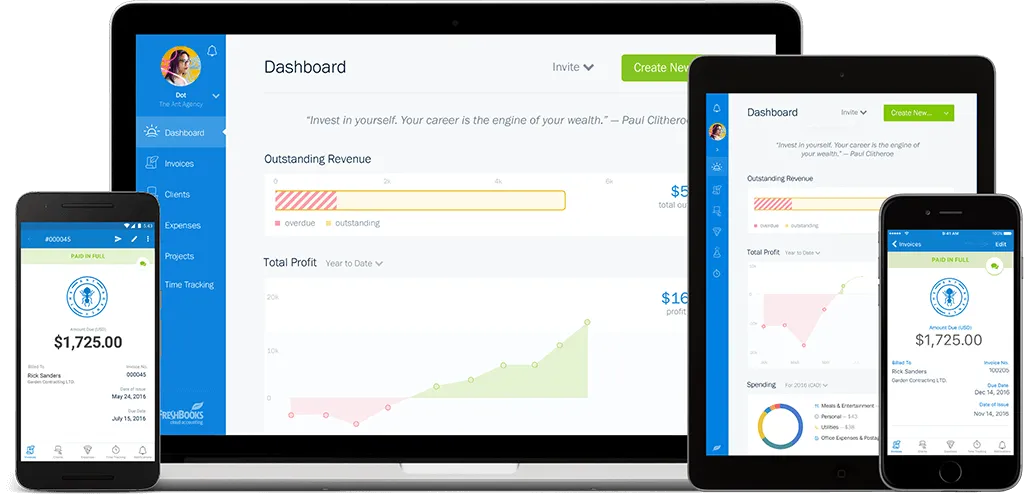Single-Entry Bookkeeping: Single-Entry vs Double-Entry

Bookkeeping is an essential part of running your business, but it can also be one of the most labor-intensive aspects of business transactions. Small business owners need to understand this topic to ensure their company’s financial status and security are protected for the long term.
One of the most important things to understand about bookkeeping is its two varieties, known as single-entry bookkeeping (sometimes called single-entry accounting) and double-entry bookkeeping (also called the double-entry accounting system two-entry accounting).
In this article, we’ll look at everything you need to know about these two modalities of bookkeeping, both single-entry systems and the double-entry method. We’ll also go over the difference between single-entry and double-entry and how to determine which one will be the most advantageous for your business’s financial position.
Key Takeaways
- While each method has advantages, one generally makes more sense for your business than the other
- In both bookkeeping methods, you need to keep well-organized, accurate accounting records
- Both methods give you a clearer picture of your transactions and net income
In this article, we’ll cover:
What Is the Definition of Single-Entry Bookkeeping?
Example of Single-Entry Bookkeeping System
What Is the Difference Between Single-Entry and Double-Entry?
What Are the Advantages and Disadvantages of a Single-Entry System?

What Is the Definition of Single-Entry Bookkeeping?
Single-entry bookkeeping is an accounting system used to keep track of a business’s finances. There is only one entry made per business transaction; most entries record incoming or outgoing funds. Transactions are recorded in a “cash book”—a journal with columns that organize transaction details like date, description, and whether it’s an expense or income.
The following transactions are recorded in the cash book for single-entry cash balance bookkeeping:
- Taxable income
- Tax-deductible expenses
- Cash
Each business transaction is listed in one column and is either positive or negative. It’s possible to split revenue and expenses into separate columns, but because each such accounting transaction is still recorded on a single line, this also qualifies as single-entry bookkeeping.

Single-entry bookkeeping can be performed in accounting software, but in its simplest form, it can also be recorded in a table. The journal you use to record transactions is called a cash book.
At a minimum, a cash book records:
- Transaction date
- A brief description of the transaction
- Transaction value: this can be placed in either an income (credit) or expense (debit) column
- Balance: a running tally of cash on hand
You can also add a column for notes and accurate financial records. The table’s last row should show the accounting period’s ending balance (at month-end or year-end, for example).
Example of Single-Entry Bookkeeping System
The below example shows a simplified single-entry cash book. Please note that in single-entry accounts, each transaction has one line. This is unlike a double-entry system with two lines for each transaction.
Each listed business transaction records the date it occurred, a brief description, whether the money is coming in or out (i.e., income or expense), and the running bank balance, which changes with each new transaction.
You could also add a reference column if you’d like to record invoice numbers and a reconciliation column at the far right to tick off if you’ve reconciled (matched) the entry to what’s on your bank statement.
Basic Cash Book
| Date | Description | Income | Expenses | Bank Balance |
| October 1 |
Balance | 500 | ||
| October 5 |
Headshots | 25 | 475 | |
| October 16 | Invoice Paid-Creative Personnel Inc. | 200 | 675 | |
| October 22 | Website Domain Renewal | 10 | 665 | |
| October 30 | Invoice Paid-Widgets Inc. | 250 | 915 | |
| Ending Balance | 450 | 35 | 915 |
After you’ve made sure your entries match what’s on your bank statement, you’ll want to make a separate document to account for transactions outside the scope of the existing cash balance and book. In the chart below, there’s an unprecedented check for $300 (this is a check that hasn’t yet cleared) and $50 cash that hasn’t been deposited yet.
Bank Reconciliation
| Cash Book Balance | 916 |
| Unpresented Check | 300 |
| Subtotal | 1216 |
| Less: Deposit Not Showing | 50 |
| Bank Statement Balance | 1166 |
It’s also possible to expand the above simple cash book into a more detailed record keeping. The below example breaks down different types of expenses, which makes it easier to track spending by category.
Detailed Cash Book
| Details | Money In | Money Out | |||||
| Date | Description | Sales | Total In | Marketing | Website | Total Out | Bank Balance |
| Balance | 500 | ||||||
| October 5 | Headshots | 25 | 475 | ||||
| October 16 | Invoice Paid-Creative Personnel Inc. | 200 | 675 | ||||
| October 22 | Website Domain Renewal | 10 | 665 | ||||
| October 30 | Invoice Paid-Widgets Inc. | 250 | 915 | ||||
| Ending Balance | 450 | 450 | 25 | 10 | 35 | 915 |
Please note you can use a table like the examples above. Simple accounting software is another option and will save you the hassle of setting up a spreadsheet.
What Is the Difference Between Single-Entry and Double-Entry?
Number of Entries
Single-entry bookkeeping has one entry per transaction, while double-entry bookkeeping has two entries per transaction—a debit and a credit. The debit is recorded in one account, while the credit is recorded in another. On the other hand, single-entry bookkeeping only uses one account per transaction.
What Is Recorded
Single-entry bookkeeping uses cash-basis accounting, a system that gets its name because it focuses on recording cash coming in (revenue) and cash going out (expenses). Cash, by the way, can mean physical cash, checks, credit card payments, or electronic fund transfers like debit or wire transfers.
Double-entry bookkeeping usually uses accrual accounting with five accounts: assets, liabilities, equities, revenue, and expenses. Single-entry only uses the last two accounts.
How Transactions Are Recorded
Small businesses using the single-entry system record revenue when it comes in and record an expense when it’s paid. Companies using a double-entry system record revenue when it’s earned, not received. And they record an expense when it’s due, not paid.

What Are the Advantages and Disadvantages of a Single-Entry System?
Advantages
An advantage of the single-entry bookkeeping system is that it’s simple and straightforward. This suits business owners who aren’t interested in or have much experience with accounting or can’t afford to hire an accountant to do their books.
Plus, the single-entry system doesn’t require complicated accounting software—a simple spreadsheet or program will do.
The IRS reports that many individuals and small businesses use single-entry bookkeeping. Remember that the IRS prohibits companies with annual gross sales of over $5 million from using this method.
Service-based companies may also prefer the single-entry system because, without the complication of inventory, a more robust accounting system isn’t required.
Another advantage is that if your business is new, small, and has limited activity, this double-entry bookkeeping system gives you everything you need. The chief report produced by single-entry bookkeeping is a business’s income statement, also called a profit and loss report (or a “P&L”).
A P&L displays how profitable a company is within a certain period of time. It’s a key document to understand your company’s financial health and see where you can or need to cut costs. Single-entry bookkeeping is focused on producing this report, which may give small business owners all the tools they need to monitor their business finances themselves.
Disadvantages
The disadvantage of single-entry bookkeeping is that it doesn’t include accounts like accounts receivable, accounts payable, and inventory. That means you can’t generate a balance sheet or income statement, which are mandatory for public companies. Thankfully, small businesses are usually privately held.
Another problem with a single-entry system is that it’s harder to track liabilities and assets. This would be an issue for a larger company with numerous assets like vehicles, buildings, or office furniture. As for liabilities, it’s harder to monitor their effect with single-entry bookkeeping.
For example, if a business owner takes out a loan, this is recorded as income in the single-entry system. This transaction would also be recorded as a credit to Loan payable (which is a liability) and a debit to Cash in a double-entry system, so you’d better understand your cumulative bank debt.
All in all, the single-entry system makes it harder to get the full picture of your company’s financial standing.
Companies that deliver goods and services and receive payment on different dates may also find that the single-entry system doesn’t suit their needs. The double-entry system better matches expenses related to producing a good or service and its resulting payment. If the two are in different accounting periods, a single-entry system won’t be able to match the two up.
However, this won’t be an issue if you’re in a creative service-based business with few expenses related to producing your work (such as copywriting).
The final problem with single-entry bookkeeping is that it’s harder to spot fraud or errors in your accounting. In the double-entry system, debits and credits always have to match in reports—if they’re out of balance, you know immediately that one or more of your entries is incorrect. The single-entry system doesn’t have this failsafe, so errors can be carried forward and compounded without anyone noticing.
Conclusion
As you can see, single and double-entry bookkeeping both have their uses, but most business owners find that one better suits their needs. Depending on your needs for simplicity, detail, and potential accounting insights, you may find a single-entry system works better for you—or vice versa.
Looking for a tool to help you keep your accounts in order, whether you prefer single-entry or double-entry bookkeeping? FreshBooks is here to help. With our flexible, powerful, cloud based accounting system, you can generate detailed accounting records in whichever bookkeeping system works best for you.
FAQs on Single-Entry VS Double-Entry Bookkeeping
After more information on the difference between single-entry and double-entry systems for bookkeeping? Here are some of the most common questions on the topic—answered.
Who uses single-entry bookkeeping?
For small businesses, the single-entry bookkeeping system is preferred for convenience. It’s a good bookkeeping method for companies with few (or no) employees that use cash basis accounting over accrual accounting, companies that have fewer financial transactions daily, and have few physical assets. For other types of businesses, the double-entry method may make more sense.
What are the three types of single-entry systems?
The three main kinds of single-entry bookkeeping are pure single-entry (no information on sales, purchases, or account balances — only considering personal accounts), simple single-entry (based on the double-entry method, but only considering personal and cash accounts), and quasi-single-entry (similar to simple single-entry, but also including other subsidiary accounts).
What is the other name of the single-entry bookkeeping system?
The single-entry bookkeeping method is sometimes also referred to as single-entry accounting. It is sometimes also conflated with the term ‘cash basis accounting.’
Which is not recognized in single-entry bookkeeping?
The single-entry method of accounting is considered incomplete as it does not recognize the nominal and real accounts but instead only maintains the business’ cash account.
Can you switch from single-entry to double-entry bookkeeping?
Yes, it is possible to switch from single-entry to double-entry bookkeeping. However, it can be a complex and time-consuming process as it requires reconstructing the financial records from scratch.
RELATED ARTICLES

 What Are the Different Types of Accounting Systems? Options Explained
What Are the Different Types of Accounting Systems? Options Explained How to Be Your Own Accountant in 7 Steps
How to Be Your Own Accountant in 7 Steps CPA vs Accountant: What Is the Difference?
CPA vs Accountant: What Is the Difference? How Much Do Accountants Charge for a Small Business? It Depends on Your Needs
How Much Do Accountants Charge for a Small Business? It Depends on Your Needs Accounting and Finance: Why Is It Important to Your Business?
Accounting and Finance: Why Is It Important to Your Business?